Helpful Tips On How To Care For Your Rhododendrons
At Van Veen Nursery, all our rhododendrons are cutting-grown and guaranteed to be true to name. We have shared some tips for you so you can also grow healthy plants in your garden.
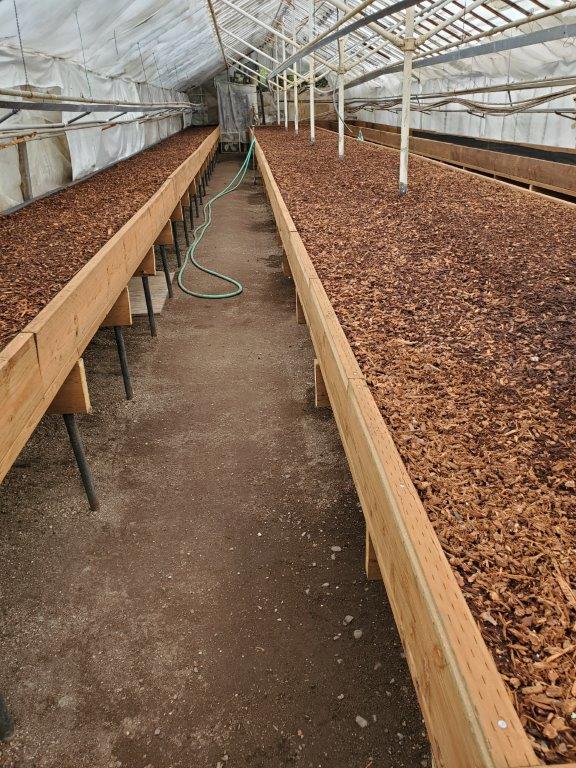
Finding The Best Soil And Spot For Planting
-
Rhododendrons require very well-drained soil. Standing water replaces necessary oxygen at the root zone, often resulting in a stunted or dead plant.
-
If the soil is too heavy or alkaline, plant in raised beds with a mixture of topsoil and ground bark.
-
It is best to plant where there is filtered sunlight, although some varieties will flourish in full sun. Avoid sites with reflections of light-colored houses and paved areas.
-
Do not plant in very windy locations like the corner of a house. Consider that some air movement is necessary to reduce excessive dampness and potential for fungal diseases.
-
Avoid sites under roof overhangs, adjacent concrete foundations, and under trees with dense shading or aggressive root systems.
-
In colder areas, it is a good idea not to locate rhododendrons facing the east in a place where the foliage is subject to quick thawing by the rising winter sun.
How To Plant Your Rhododendron
-
If the soil is moist and workable, your rhododendrons can be planted at any time of the year. Planting on hot days should be avoided since newly transplanted plants may not have the root system to take up sufficient water.
-
Balled and burlapped plants often will be a bit dry and should be moistened by soaking in a tub of water at least five minutes before planting.
-
Natural burlap can be peeled back from the top third of the root ball. Synthetic ties or wrapping should be removed completely.
-
Container-grown plants should also be soaked. Meanwhile, rootbound plants should have their root balls cut and disturbed before planting.
-
Dig a hole deeper and wider than your plant’s root ball. As for its size, you should base it on the soil’s condition:
-
Heavy Clay or Alkaline Soil - Plant in a way that the crown of the rootball is a few inches above the soil level. This allows for greater aeration at the root zone. In extremely heavy soils, rhododendrons should be planted in a raised bed of well-drained soil.
-
Moderate Clay or Sandy Soil - Prepare the hole twice the diameter as the root ball and again as deep. Mix the backfill soil with at least 50% organic material such as shredded bark, peat moss, and compost.
-
Rich, Woodsy Loam Soil - The hole only needs to be large enough to easily contain the root ball.
-
Fill in the soil and water sufficiently to settle. The top of the root ball should be level, if not slightly higher than the surrounding soil.
-
Sprinkle a small handful of Rhododendron-Azalea-Camellia fertilizer around the drip line- not near the trunk.
-
Mulch with pine needles or bark chips to hold in moisture, cool the soil surface, and control weeds. Take care to keep it away from the trunk.
You can also check the American Rhododendron Society’s planting guidelines for additional planting information.
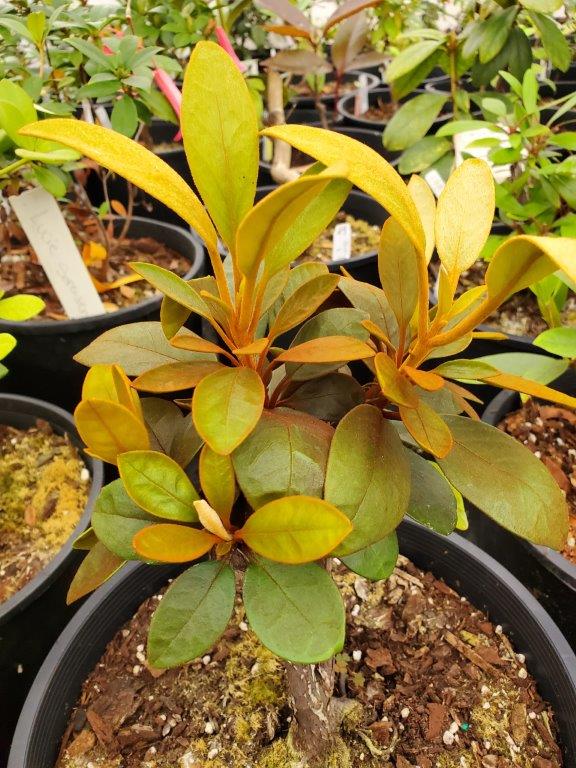
Plant Care After Propagation
Using Fertilizer
Younger rhododendrons should be fertilized before and after blooming. Broadcast a light handful of standard rhododendron fertilizer around the plant away from the trunk and as far out as the spread of the foliage (drip line).
Meanwhile, older, well-established plants do not need to be fertilized unless the foliage color indicates a deficiency or the plant is not satisfactorily flowering. If the soil is above a pH of 6, then an iron chelate may be useful in maintaining a good green plant color. If soil and water are very alkaline, sulfur applications will be necessary once or twice a year. We also advise that you consult with experts in your area.
Watering Your Plant
Your plant's roots should be moist but never too wet for a long time. Watering once a week, equivalent to about one inch, should be satisfactory. Rhododendrons may benefit from extra water while they are blooming and until the new growth has hardened off.
As for new plantings, they should receive supplemental water until they are established. When the weather is very hot, we advise overhead watering for rhododendrons.
Pruning Rhododendrons
Pruning is seldom needed if the plants have been selected to fit comfortably in their location. The best time for it is during spring, immediately after flowering. The cut should be made just above the whorl of leaves.
For older plantings, you can opt to cut back leggy branches to a more desirable height. This more severe pruning will force lower dormant growth buds to emerge. Pinching them as they start in the spring will encourage branching and produce a more compact plant.
Deadheading
Breaking off faded bloom clusters will provide your plant with the stimulus for stronger new growth. However, you should be careful not to damage the growth buds about to break immediately under the faded flower.
Keeping Pests Away
Rhododendrons are relatively pest-free. Root weevils and lace bugs are pests that require the most attention.
Rooted Cutting And Liner Care
Planting
Pot up or plant in a protected area. Use a loose, well-draining medium such as one containing some bark, compost, or perlite.
Watering
Keep soil thoroughly wet but never soggy.
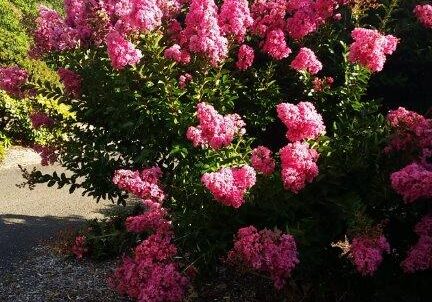
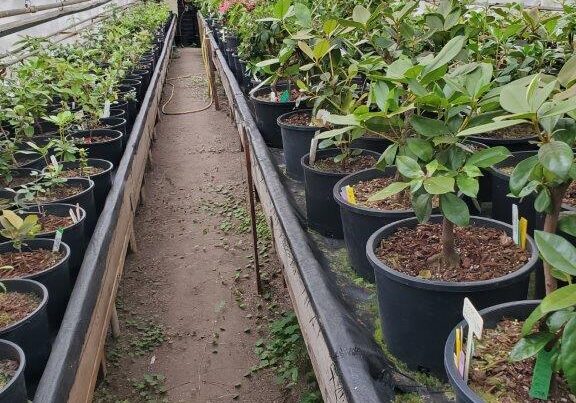
Protection
Shelter from heat, frost, and wind for the first 6-12 months and place in a protected area such as a plastic-covered hoop house. Keep it open and shaded in the summer. Anti-desiccants such as Vaporgard can be used as protection from both the heat and cold. They may also help in preventing some fungal problems.
Shaping
New growth is expected in 1-2 flushes during the first summer. Pinching out the center bud will help the lateral buds develop, thus producing a more bushy plant.
Fertilizing
Use a liquid fertilizer 20-20-20 1T/gal. and apply once every 7 to 10 days between April and August. Stop fertilizing in time to allow new growth to harden before the first frost. Epsom salts, 1 T/gal., can be applied occasionally to add magnesium for better color.
Weeding
Hand weeding is best because plants are shallow-rooted. Pre-emergent herbicides are not recommended for these
young plants.
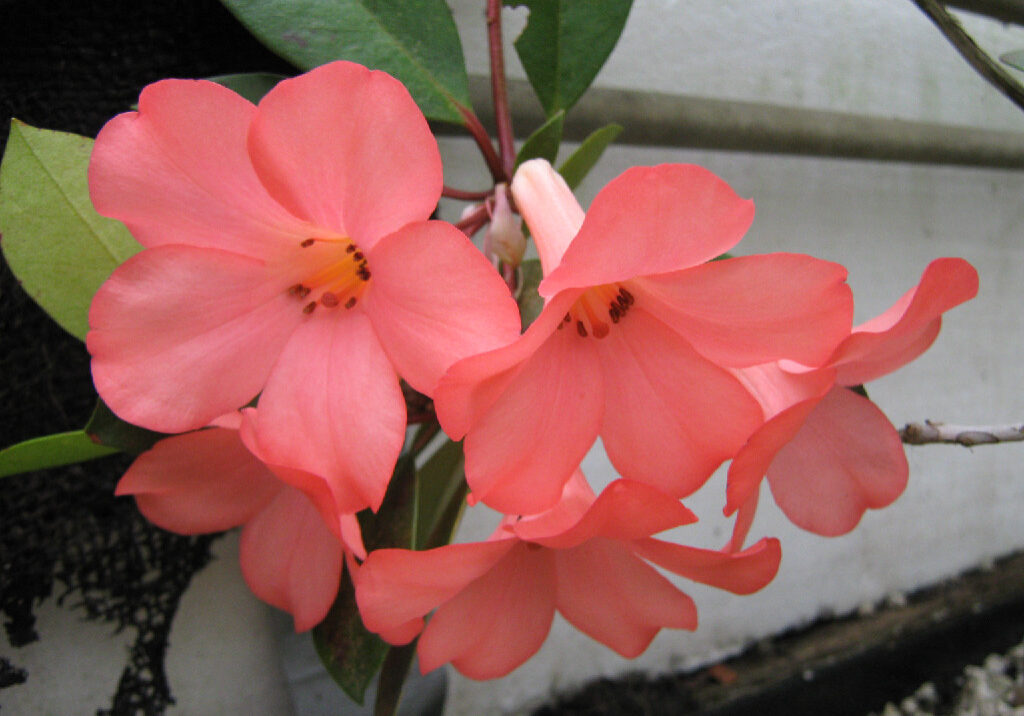
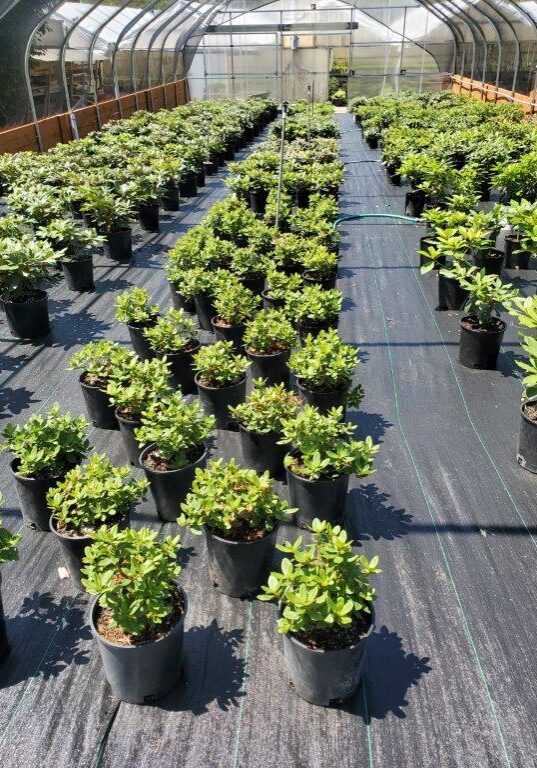
Disease Control
Root rot occurs in some varieties, especially in yellow-flowered rhododendrons, when conditions are both hot and wet. In the Pacific Northwest, this is in July and August. Well-drained planting soil is essential to prevent this. You can also use biological products such as Rootshield or Actino-iron, which contain beneficial organisms that form protective colonies on the plant roots. These must be applied before problems are expected.
Another problem is powdery mildew, which may be evident in some varieties and some climates. Use a systemic fungicide, such as one used for roses, so there is no need to spray leaf undersides.
Pest Control
When it comes to pests, weevils may be a problem. The grub stages of the weevil, which exists in the soil in fall, winter, and spring, do the most damage. It eats roots and underground stems and may completely girdle the plant and kill it. In the summer, you should watch for notching from the chewing beetles. You may opt to use various insecticides to control them.
Our Nursery’s Process
Under Kathy's close supervision, cuttings are gathered and prepared between July and November. They are planted in open benches in traditional glass greenhouses and supplied with bottom heat and high humidity.
Since root development is an all-important consideration, most plants sold as rooted cuttings have no top growth. However, we assure you that they do have large, vigorous root balls.
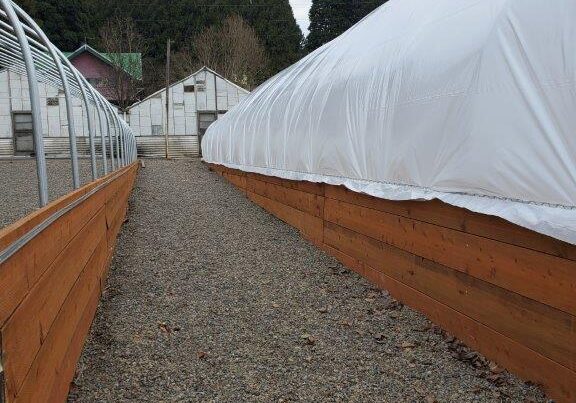
Get In Touch
Our line is always open for inquiries about our services and our plants. For any inquiries, contact us today.
